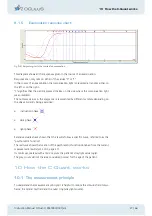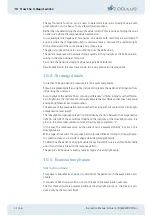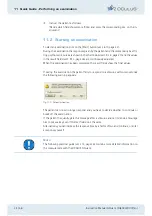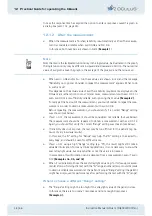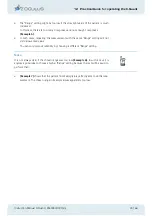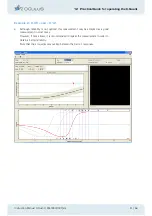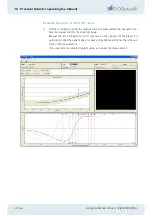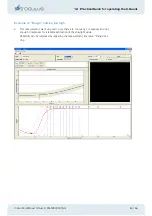
11 Quick Guide - Performing an examination
Instruction Manual C-Quant ( G/80000/1007/en)
33 / 56
For the last two stimuli the straylight source is switched on as well, as in the actual ex-
amination.
However, the compensation light is turned so high that patients will always see the com-
pensation light flickering more intensely, regardless of his straylight value.
Dark phase
In this phase the compensation light is kept constant while the intensity of the straylight
source is continually increased.
This will make the patient’s decision more and more difficult, up to the point where the
straylight source reaches its full intensity.
The measurement principle with this procedure remains the same.
This phase simulates the increasing glare experienced by motorists from oncoming vehi-
cles.
Light phase
The result of the dark phase gives a reasonably good approximation of the patient’s stray-
light value.
To determine it with greater precision he is now shown 13 stimuli in the light phase which
are grouped around the initially determined value.
In this phase the straylight source has a constant intensity of 300 cd/m2, and the stimuli
are presented in random order.
11 Quick Guide - Performing an
examination
11.1 Before the examination
Before starting an examination you need to specify the eye, correction lens and range
(sect. 9.1, page 23).
Please observe the following points:
The eye not being examined should be covered.
The corrective lenses should be clean and free of scratches, since this would affect
the measurements.
The patient must hold the eye to be examined close to the viewing hole, without
pressing against it (see sect. 12.1, page 35).
The patient should open his eye as wide as possible to prevent light scatter by his
eyelashes.
The examination should preferably be performed in a dimly lit room.









